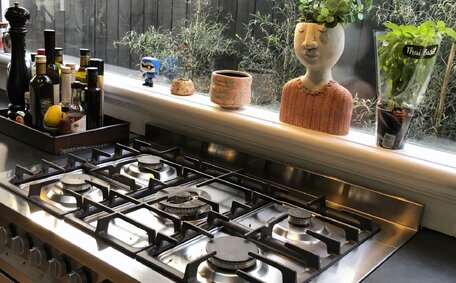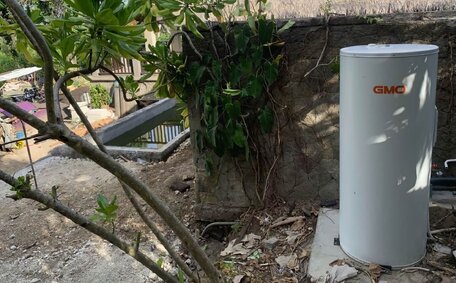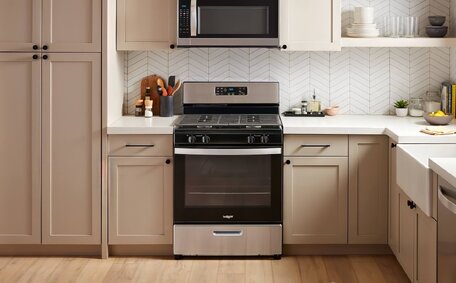
Financial Benefits of Natural Gas
Natural gas offers many financial perks over other energy sources. It burns cleaner and costs less than alternatives, helping lower monthly bills.
Read MoreA gas pilot, also known as a heater pilot light, is a small flame found in gas-powered appliances like your water heater, furnaces, and fireplaces. The water heater pilot light provides a ready ignition source so the main burner can fire up quickly and efficiently whenever you need hot water or heat.
Its purpose is to ignite the main burner when the appliance is turned on, with the gas pilot light being a crucial component.
This activates the heater pilot light, enabling gas to reach the main burner. The existing pilot flame then ignites the gas at the main burner, making it essential to know how to light pilot for a properly functioning system.
It’s connected to your water supply line and is a fundamental element of your star gas hot water system. The pilot light gas burns continuously, consuming minimal gas.
The standing pilot light offers the main advantages of quicker ignition and enhanced combustion efficiency, crucial for the effective operation of your appliance. Without an operational pilot flame, igniting the main burner each time would require more energy, making it efficient to keep the pilot lit. If the pilot light on your gas water heater goes out unexpectedly, it signals an issue that should be addressed before attempting to relight.
Pilot lights in your hot water system can also detect issues with gas supply and draught, acting as a safety mechanism.
There are a few common reasons why you may need to relight your pilot light on your hot water system:
- The pilot light simply goes out - Pilot lights may end up going out due to strong drafts or gusts of wind. Furthermore, contaminants in the gas supply, such as dirt, oil, or water, can obstruct the pilot light nozzle. Over time, the pilot light mechanism wears out and may not stay lit.
- You’ve turned off the gas - When performing gas work, you must shut off the gas supply. This will extinguish the pilot light, requiring it to be relit once gas is turned back on.
- The water heater needs servicing - Understanding how to reignite the pilot light is important, especially during maintenance or repairs when it’s intentionally extinguished. It needs to be reignited when the work is complete before restoring hot water.
- You run out of gas - If your gas cylinder becomes empty, the absence of gas will cause the pilot light to go out. Get your cylinder refilled and Ensure there is no gas escape before attempting to relight the pilot.
- Power outage - Some hot water systems with electric controls need power to activate the gas valve and pilot light. A power failure can shut off the pump hot water system’s gas supply and extinguish the flame.
If you find you have no hot water, always check pilot integrity and for gas leaks before attempting to relight the pilot. Never strike matches or create ignition sources if you smell gas.
To locate the pilot light assembly on your Rheem gas hot water system, first identify the specific make and model of your unit. The most common brands of gas hot water heaters found in Balmain homes include Rheem hot systems, Aquamax, and Bosch.
On many models, such as Rheem, the pilot light assembly is near the base, close to the main burner. It’s positioned behind a small access panel or behind a removable cover plate marked "pilot".
For Aquamax units, remove access panels at the tank’s base to find the pilot assembly and gas control knobs. For Aquamax, you’ll need to unscrew and remove a plate labelled "pilot" to access the pilot light nozzle and thermocouple.
With Bosch gas hot water systems, the gas knob controlling the pilot is often visible and accessible without the need to remove additional covers. In Bosch units, the pilot assembly might be shielded by metal, with an observation window for the pilot flame near the regulator valve.
Across different makes and models, the pilot light is consistently positioned near the main burner. Especially in Rheem hot water systems, looking for a small access panel near the gas control valve, burner, and gas line is often the quickest way to locate the pilot light. The assembly will consist of a small nozzle connected to the gas supply, with a nearby ignition button or ignition electrode.
Take these important safety measures before attempting to relight the pilot light of your gas hot water system:
- Prior to any intervention, shut off gas supply by finding the valve that controls gas flow to the water heater and turn it to the 'off’ position. This is often indicated by a red button or sign on the gas line just before it enters the unit.
- Smell for gas leaks - Before trying to ignite, ensure that you’ve turned the control knob to the off position and then sniff around the unit to detect any presence of natural gas. Conduct this gas sniff test right after turning off the gas. If you detect gas, ensure the gas control knob is in the off position and do not attempt to relight the pilot until the leak is repaired.
- Allow time for dissipation - After turning the gas off, Wait 5 minutes to let any residual gas dissipate, ensuring a safer relighting process.
- Ventilate the area - Turn off any potential ignition sources and open windows to get fresh air circulating before attempting to relight. This further reduces any gas buildup in the room.
- Have an escape plan - Know your exit strategy in case the relighting does not go to plan. Be ready to evacuate and, if necessary, call emergency services.
- Have a professional relight - Call a licensed gas fitter if you’re uncertain about relighting the pilot safely.
Taking these simple precautions first can prevent accidents and make relighting the pilot light on your hot water system a quick and problem-free process.
-
Follow these steps to safely relight the pilot light: Refer to your make and model to find it.
If the pilot on your hot water heater will not stay lit after multiple attempts, Contact Balmain Plumbing, also servicing the Gold Coast, on 1300 349 338 for same day service and professional gas fitting services.
The thermocouple is a vital component in the pilot light assembly. It’s a sensor that detects the pilot flame and signals the gas control valve to open when hot water is needed.
To test if the thermocouple is working properly:
A thermocouple that consistently fails this test might need replacement. Contact a licenced gas fitter to install a new thermocouple and restore proper pilot operation.
Testing the thermocouple regularly allows you to identify component failure before complete pilot shutdown occurs. Take action at the first sign of problems to keep your hot water flowing.
Once the pilot light is relit, observing the flame is important to ensure proper operation. When you’ve turned the gas off correctly, the flame should burn steadily without flickering or changing intensity. A proper pilot light should be a small, steady blue flame about 1 centimetre tall.
If the flame is weak or lazy, the gas pressure may need adjusting. Contact a professional gas fitter to inspect the flame and gas pressure.
After relighting, resetting the gas valve is also required:
Observing the newly relit pilot flame and properly resetting the gas valve brings the relighting process to completion. Your hot water system in Balmain should now be fully operational.
After relighting the pilot light on your gas hot water system, you may encounter some common issues that require troubleshooting:
If the pilot light won’t stay lit and repeatedly goes out after following the proper relighting steps, there are a few things to check:
A weak or flickering pilot flame indicates improper gas flow regulation. Suggested actions include:
If there’s no hot water after relighting the pilot, investigate these potential causes:
For ongoing pilot or hot water issues after relighting, Balmain Plumbing is available on 1300 349 338 to provide troubleshooting, repairs and professional gas fitting services.
While many homeowners can relight their water system pilot light, some situations warrant professional assistance from a Balmain plumber:
For efficient and reliable hot water system repairs and maintenance, contact Balmain Plumbing at 1300 349 338.
Replace the pilot assembly every 5 to 7 years to prevent outages due to wear. Perform monthly checks of the pilot light to ensure it burns a bright, steady blue, identifying any issues early. Maintain cleanliness of the water tank exterior to easily observe the pilot window for any irregularities.
Natural gas offers many financial perks over other energy sources. It burns cleaner and costs less than alternatives, helping lower monthly bills.
Read MoreChoosing the correct hot water system size involves considering factors like number of household members, number of bathrooms, peak usage times and daily hot water needs per person. Our guide helps determine the right system capacity.
Read MoreHaving trouble with your gas water heater not heating properly? The pilot light may have gone out. Follow our clear guide on relighting your gas water heater’s pilot light in 6 easy steps. Or call the friendly experts at Balmain Plumbing if you need assistance relighting your pilot.
Read MoreBalmain, 2041 NSW
We will call back as soon as possible.




